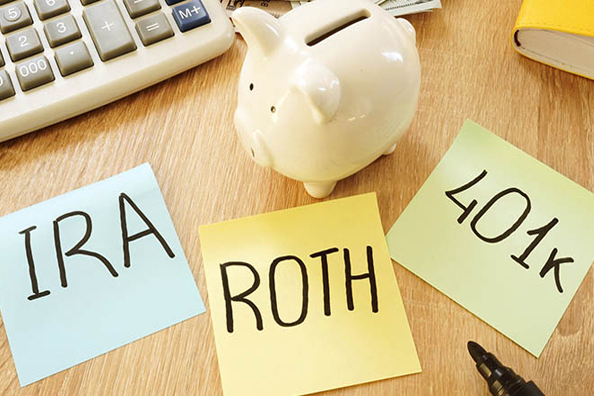
If you made after-tax contributions to your 401(k), you may be asking yourself whether you can roll that money into a Roth IRA tax-free.
The short answer to this question is yes.
After-tax funds can be segregated from other funds in the account and transferred directly to a Roth IRA. Be careful to consider that after-tax contributions to a regular 401(k) with contributions to a Roth 401(k), which are also made with after-tax dollars, have slightly different rules that apply.
Suppose you’re retiring and have $400,000 in your traditional 401(k) plan, including $50,000 of after-tax contributions. Rather than rolling the entire amount into a traditional IRA, you could move the $50,000 in after-tax contributions to a Roth IRA and roll the remaining $350,000 into a traditional IRA.
But there are some important caveats. You can’t move the entire account to a traditional IRA and decide later to convert the after-tax portion to a Roth; you must split off your after-tax contributions at the time of the rollover. Once the money is in a traditional IRA, any distributions—including money converted to a Roth—will be taxed based on the ratio of pretax and after-tax assets in the plan.
Once your after-tax money is in a Roth IRA, future earnings will be tax-free rather than simply tax-deferred (as they were in the company plan), and you won’t be required to take minimum distributions.
A 100% rollover. In most cases, you’ll need to roll the entire balance out of your 401(k) to take advantage of this strategy. Otherwise, you would be subject to the pro-rata rules. Using the example above, suppose you had $400,000 in your 401(k), including $50,000 of after-tax contributions. If you pulled out $50,000 to convert to a Roth and left $350,000 in the company plan, only 12.5% of the withdrawal, or $6,250, would be tax-free. You’d have to report the rest as taxable income for the year of the transfer.
There is an exception to this rule. If your employer offers a separate account for after-tax contributions, you can roll that money into a Roth IRA without emptying your 401(k) plan. Sticking with the above example, let’s say you have $45,000 in contributions plus $5,000 in earnings in a separate, after-tax account, and $350,000 in a pretax account. In that case, you could withdraw $50,000 and invest $45,000 in a Roth. You’d be required to invest $5,000 in a traditional IRA because the earnings are pretax.
If you’re still working and can stash a lot of money away for retirement, it’s worth asking if your company plan allows after-tax 401(k) contributions. If not, and you’re a super saver, you may want to encourage your employer to add this benefit. A Roth 401(k) offers a better deal and should be used first; earnings are tax-free rather than tax-deferred, and you can roll the money into a Roth IRA, tax-free when you retire. But it comes with lower contribution limits than after-tax contributions to a traditional 401(k).
We all want to lower our tax liability but there is no one-size-fits-all approach, which is why it’s important to understand which strategy fits your situation. Contact us today to discuss your retirement plan and how we can help you to reach your retirement goals.










